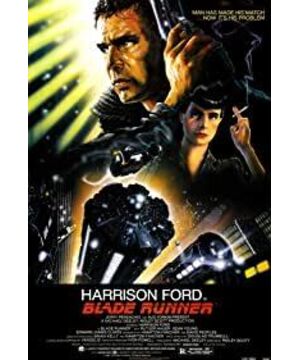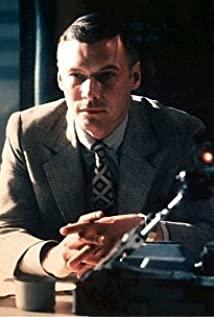Cyberpunk & Blade Runner
The charm of cyberpunk will never fade, and the glory of "Blade Runner" is far from over...
In the past two weeks, the most talked about and hottest in the game industry is probably the new work CDPR will release next year: "Cyberpunk 2077". This game, which requires at least 80GB of capacity, won the first place on Steam as soon as it was released for pre-sale, and its influence is evident.
Why is the concept of "cyberpunk" still enduring today?
This is inseparable from the credit of a movie 37 years ago.
01
On June 25, 1982, the film "Blade Runner" was released.
The film was not a success when it first came out. The dim picture and a lot of scenes with obscure dialogues caused both box office word-of-mouth failures. The box office score of 27 million was only ranked 27th in the North American annual box office at that time. Director Ridley Scott later recalled that the film's reputation was slowly expanded to the public at the recommendation of filmmakers and rock artists such as Bob Dylan.
Classics are always slowly precipitated with word of mouth. In 2004, in the "Top Ten Science Fiction Movies in History" organized by the British "Guardian" and selected by 60 professionals, "Blade Runner" ranked first with an absolute advantage.
The unique significance of this film is that it defines the theme of the future and fully reflects the sci-fi genres such as "cyberpunk". It can be said that without "Blade Runner", there would be no later related "artificial intelligence" and so on. A sci-fi movie, uniquely groundbreaking gives it a lofty historical status.
02
In the early 1980s, the stamina of the hippie movement and the rapid development of science and technology created a social atmosphere in which information is flooded and material desires flowed. Human beings became more and more dependent on machines and became more and more afraid. The rise of a large number of man-made products caused human alienation and changes in social structure. , which leads to deep thinking at the human and machine level: the relationship between the two and how to deal with this relationship in the future.
"Cyberpunk" developed and grew under such conditions.
It advocates doubting the human self, that everything around us may be controlled by computers, that the boundaries between humans and machines are blurred, and that replicators (robots) may also be called "humans", and vice versa. With the development of science and technology, human consciousness can be controlled by others. Hackers invade your brain to send instructions. As an individual, you cannot judge whether your actions are the product of your own consciousness or various codes implanted by others.
Is it a general trend for those with better physical fitness to replace human beings with more advanced minds? How do humans and machines coexist?
This anxiety has spawned a large number of excellent works of literature and art, including Philip Dick's classic "Do Androids Dream of Electric Sheep?" After buying the naming rights for filming, we have "Blade Runner", which has a famous film history.
03
Although Kubrick's "2001: A Space Odyssey" preceded it in 1968, "Blade Runner" was the first film to deal with artificial intelligence from a human and emotional perspective, focusing more on the opposite.
It creates an unprecedented future world on a constrained budget:
A city that is always raining; foggy streets, dirty and crowded streets; huge Chinese characters, Japanese graffiti.
These audio-visual elements present a sad and decadent future world.
The classic shot in the movie "Japanese geisha shot on a huge billboard" will be imitated in future movies of the same type, which is inseparable from the director's in-depth understanding of cyberpunk. The soundtrack by the Greek composer Vangelis makes the film sink into a poignant and psychedelic realm, setting a cold and gloomy tone for the entire film.
It is worth mentioning that in the era when special effects were not too developed, the technical deficiencies were just covered by the dark tones, and the scene structure that perfectly fits the style of the film makes this film even now, the visual effect is completely complete. Not out of date.
04
The movie makes a very interesting setting for the proposition of "whether it is a 'person'", that is, the empathy test.
The male protagonist Rick asked a series of subjective questions to test whether the other party is a replicator, such as "willing to help the turtle turn over". These questions relate to various basic human emotions and become the basis for judging which category the other person belongs to. This adds depth to the question Rachel, the replicant, asks Rick in the film: Have you ever done an empathy test on yourself? Rick thinks he has the right to judge others, but maybe it's just implanted code.
The film spends a lot of pen and ink to describe the actions of the replicants, but does not directly show the battle with "Blade Runner" Rick Deckard, in order to highlight the image of the replicants and trigger the audience's thinking.
As an artificial human, the ability is more powerful but not recognized by "people", and the advanced thinking is imprisoned by the setting of four years of life.
Such contradictions are shown in the film through a series of slow motions:
The replicant Zola was shot by Rick. She rushed into the doll display cabinet and came out again, expressing her desire for human coexistence, but she is only an artificial human, and her identity is destined to be destroyed... ·
05
Roy, the leader of the androids, feels that he is stronger than "human" and longs to be recognized and survive in the world normally. But at the end, he faced Rick who was powerless to fight back. He didn't kill the killer, he just wanted to prove that he also had the "human" side.
This also leads the audience to think: What is the source that makes humans feel higher? What is man himself?
This theme has also become one of the motifs of sci-fi movies of the same type in the future. But even after many years, there is still no film that can surpass "Blade Runner" on this theme. As time goes by, this towering monument has become more and more legendary and mysterious.
Let us revisit Roy, who just passed away, and the classic dying speech at the end of the film:
I have seen things that you humans absolutely cannot believe.
I have seen warships burn on the edge of the Orion constellation.
I have watched C-rays sparkle in the darkness of Tannweiser Gate.
All these moments will eventually pass in time.
Like tears in the rain.
Dead time is over.
The glory that belongs to "Blade Runner" is not over:
In 2017, the sequel "Blade Runner 2049" directed by Dennis Villeneuve was released and received a good reputation;
Next year, the animation "Blade Runner: Black Lotus" co-produced by Kenji Kamiyama ("Ghost in the Shell") and Shinichiro Watanabe ("Cowboy Bebop") will also be presented to the world.
Coupled with the new game mentioned at the beginning that is bound to trigger a craze, the charm of cyberpunk will never fade away, and that weird, damp and dim world may one day really come.
View more about Blade Runner reviews











